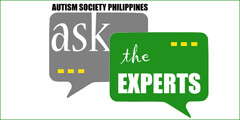Before I knew what a seizure was, my son was taken down. He went down many times from ages two to three. The first was in the kitchen, collapsed on the floor. Later, it happened like a geography dream. Each seizure had its own place and its season: in the supermarket, aisle two; naked on the rug in my father’s home; at the top of Silver Hollow in the middle of winter. It’s not something a person can get used to. Each place and circumstance lodges in the mind indelibly. Each time it’s a loss of sudden nature.” ~ From Valerie Paradiz’s “Elijah’s Cup”
The beginning of “Elijah’s Cup” hooks you into submission. Ms. Paradiz’s ability to captivate with words makes her moving account of her family’s journey lyrical, almost poetic. And yet, one can also sense the very strong undercurrents of fear hidden beneath her spellbinding words. Imagine a mother holding a small toddler of two in her arms as his eyes roll back and he becomes rigid and unresponsive. Imagine.But what is a seizure? Far removed from the literary magic that is woven in “Elijah’s Cup,” we begin to understand what seizures can do.
In its simplest definition, a seizure is an abnormal electrical activity in the brain. Laymen often call seizures convulsions or epilepsy, but suffice to say that while we are free to use these terms interchangeably, they do NOT mean the same thing. We cannot see with our naked eyes what happens to the brain while a person has a seizure, but the physical signs are almost universal. To make matters a little more confusing, allow me to briefly interject that there are also subclinical seizures, or those whose symptoms cannot be detected through simple observation. Typically, however, a person who has a seizure may have all or some of the following: changes in consciousness, vision, sensation, and/or emotions, loss of muscle control (falling is an example), and uncontrollable muscle movements (twitching, shaking, and/or rigidity).
The causes of seizures are varied and many. Some are idiopathic, meaning they occur without an identifiable cause. Some are caused by tumors, exposure to drugs, traumatic brain injuries, or infections. In short, almost anything that injures the brain can cause a seizure.
What concerns many parents with children with autism is the strong association autism has with seizures. A friend of mine recalls learning about this at an Autism Society Philippines’ conference years ago, when her son was young, and it filled her with such dismay that she wept uncontrollably. On my part, I remember reading about this in Dr. Eric Schopler’s 1992 book, “Asperger Syndrome or High Functioning Autism,” with a reference made to “low-functioning” autism and higher rates of epilepsy as compared to individuals with High Functioning Autism and Asperger Syndrome. My own son, Alphonse, is considered “low-functioning,” and while he continues to defy his prognosis, this bit of information frightens me no end.
Studies have already shown that roughly a third of individuals with autism have a seizure disorder. Moreover, it is said that about 25% of these individuals begin to have seizures during puberty. What does this mean for my son and for many others like him on the cusp of adolescence, and soon, adulthood? What do I look out for? How do I know what he feels when he is nonverbal and unable to express anything beyond his most basic needs? Are behavior problems — aggression and self-injury — also indicative of seizure activity? How do I differentiate his tics with a seizure? How will I know?
 |
| Dr. Knut Erik Baalared |
There are more questions than answers for now, and I am grateful that Dr. Knut Erik Baalerud, current head of the Department of In-Patient Treatment in General Psychiatry in Ringerike Hospital, Norway, has agreed to speak to us at the Autism Society Philippines’
11th National Conference on Autism. Sharing his years of experience and expertise gained from working with individuals with special needs, autism being one of them, Dr. Baalerud is certainly a welcome addition to this year’s conference.
I often wonder, late at night, what the future holds for my son. I may not have all the answers today, but I seize each moment with the promise of hope. Come to
Autism Beyond Borders (where HOPE prevails) on October 25 and 26, 2009 at the SMX Convention Center.
Registration is still open and early bird rates still apply.
Come. Maybe you and I can find the answers together.
Pinky Ong-Cuaycong is Kittymama, full time mom of two boys (a 16-year-old high school junior and a 14-year-old with profound autism), part-time writer, and blogger. In
Okasaneko Chronicles, she writes about her life’s deepest passions: her husband of 18 years, her teenage sons, autism advocacy, and Hello Kitty.





0 comments:
Post a Comment